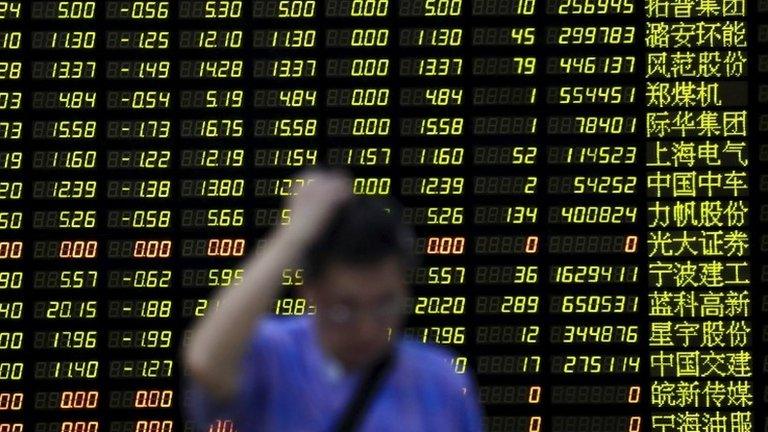China circuit-breakers fail to calm markets
- Published

Chinese stocks' nosedive triggered the second trading halt of the week on Thursday
If at first you don't succeed - try and try again.
Or maybe you don't. Especially if panic breaks out on your stock markets for a second day this week.
The decision by China's regulators to suspend the brand new circuit-breaker mechanism - which only came into effect this week - tells you just how difficult it is to manage or control financial markets.
But perhaps that's the point.
Meddling in markets can only lead to misery - at least, that's certainly what many in China's financial circles may now be thinking.
The circuit-breakers were designed to "protect investors and calm markets", according to regulators, but they have had the opposite effect.
Analysts have criticised Chinese authorities for not being clear enough in their communication to the market, and for being too heavy-handed in their attempts to control share prices.
Periodically in the past, the government has shored up financial and stock markets through backdoor money market injections - a regular occurrence in China - and this week in an attempt to boost confidence, authorities poured $20bn into the money markets - but although there was a brief rally on Tuesday, so far not much has worked to stave off the panic.
This move may well rattle the confidence of investors even further. Watch out for more volatility on Friday.
- Published7 January 2016

- Published7 January 2016

- Published7 January 2016

- Published7 January 2016

- Published4 January 2016